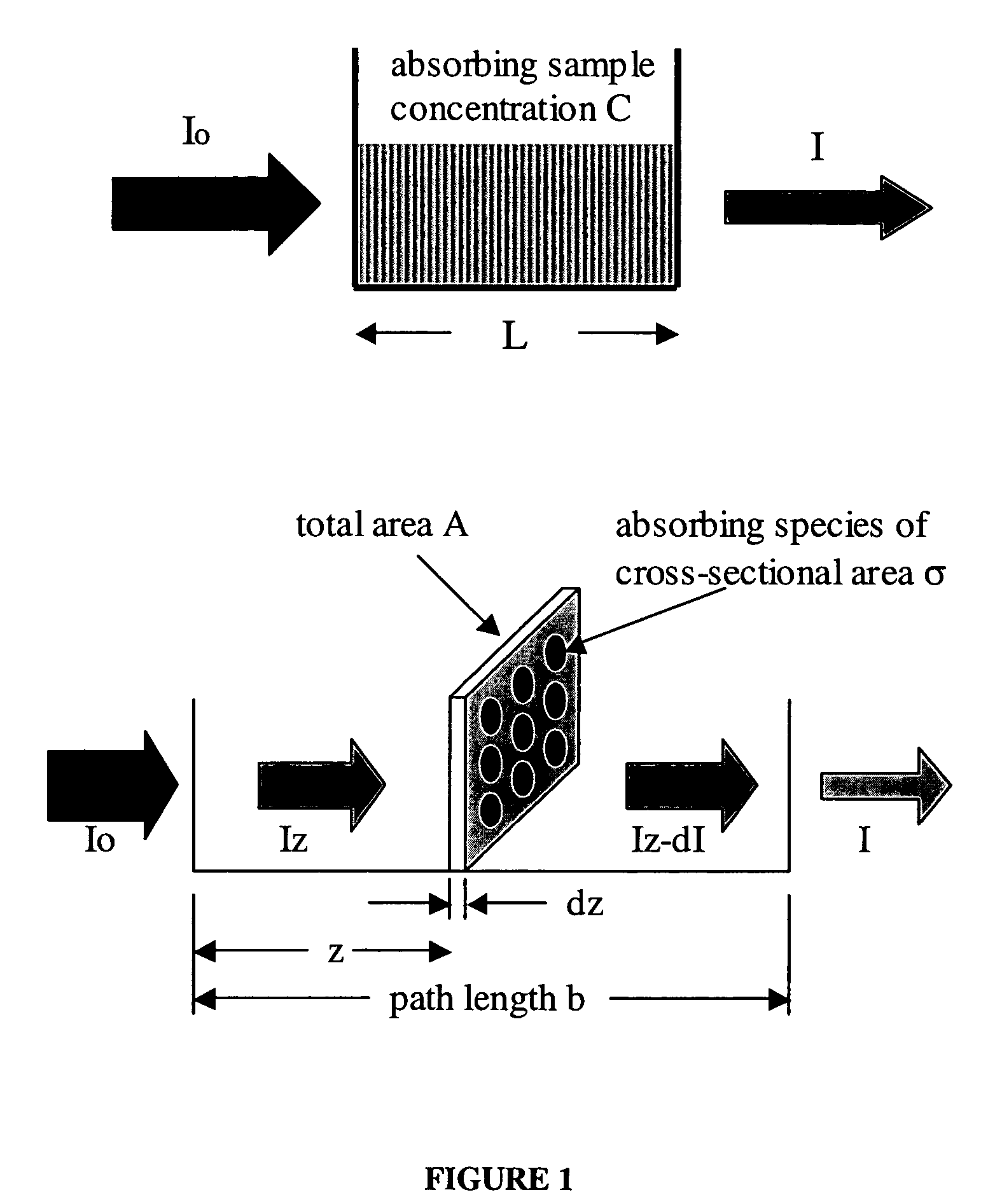Method for detecting a gaseous analyte present as a minor constituent in an admixture
a gaseous analyte and minor constituent technology, applied in the field of gaseous analyte detection as a minor constituent in an admixture, can solve the problems of difficult identification of which absorption peak is attributable to a particular molecule, difficult to detect these weak absorption features in the nir spectral region, and none of the above-mentioned existing absorption spectroscopy methods can measure absolute absorption
- Summary
- Abstract
- Description
- Claims
- Application Information
AI Technical Summary
Problems solved by technology
Method used
Image
Examples
Embodiment Construction
[0097]To maximize sensitivity of the cavity ringdown spectrometer to a gaseous species, (i.e., the target analyte) the optical absorption at the peak of the target absorption line should be maximized. Also, to reduce interference from neighboring absorption lines of the same or other species, the width of the target and also neighboring absorption lines should be minimized. From the foregoing discussion of peak broadening, it can be seen that there exists a pressure region, which depends on the particular target species, but which can be computed from the Voight profile, using known Doppler and Lorenztian broadening coefficients, such that the peak absorption increases only slowly and / or not significantly above said pressure region, and such that the width of the target absorption line decreases only slowly and / or not significantly below said identified pressure region. This is the transition region between Doppler and pressure broadening. For practical detection applications the pe...
PUM
| Property | Measurement | Unit |
|---|---|---|
| wavelength | aaaaa | aaaaa |
| wavelength region | aaaaa | aaaaa |
| wavelength region | aaaaa | aaaaa |
Abstract
Description
Claims
Application Information
 Login to View More
Login to View More - R&D
- Intellectual Property
- Life Sciences
- Materials
- Tech Scout
- Unparalleled Data Quality
- Higher Quality Content
- 60% Fewer Hallucinations
Browse by: Latest US Patents, China's latest patents, Technical Efficacy Thesaurus, Application Domain, Technology Topic, Popular Technical Reports.
© 2025 PatSnap. All rights reserved.Legal|Privacy policy|Modern Slavery Act Transparency Statement|Sitemap|About US| Contact US: help@patsnap.com



